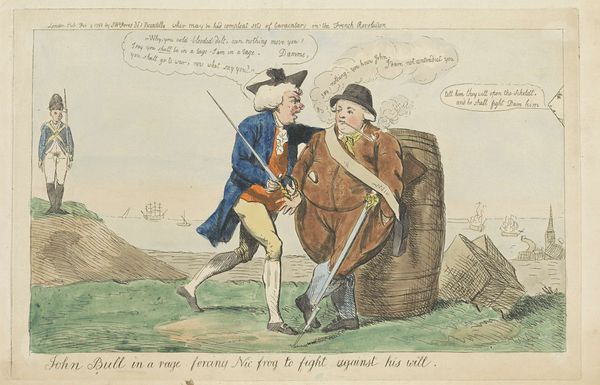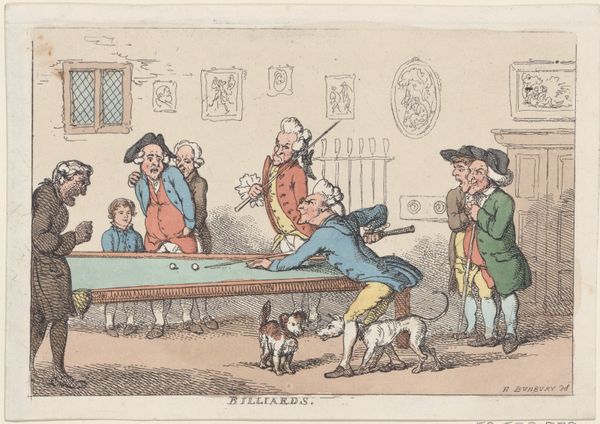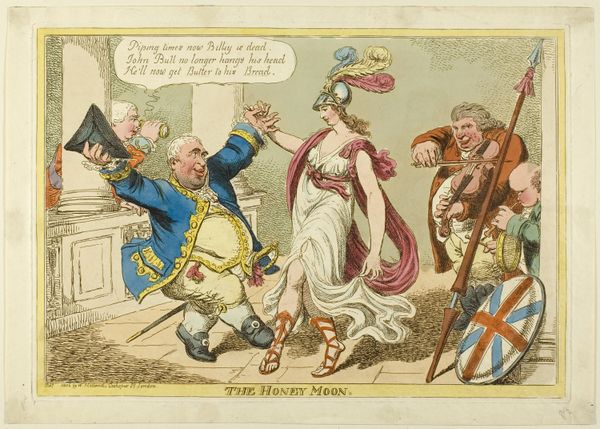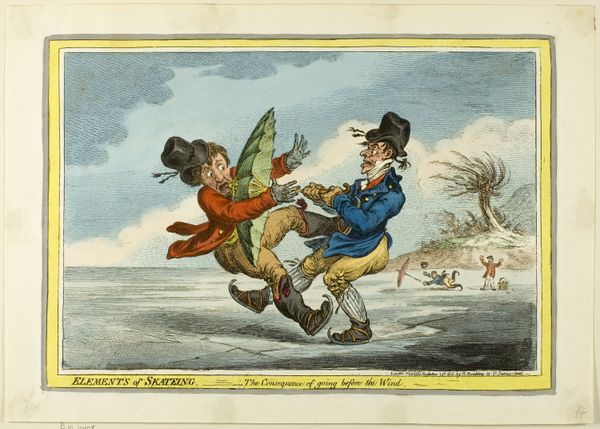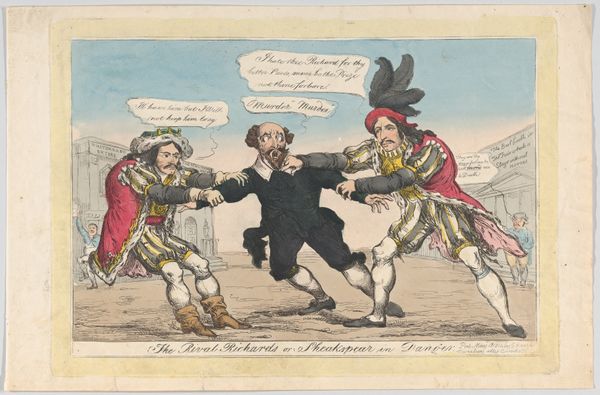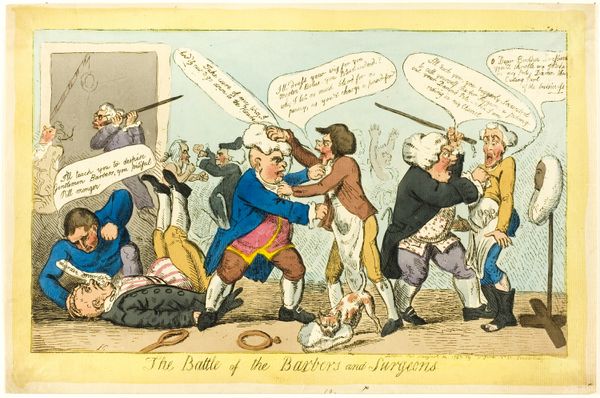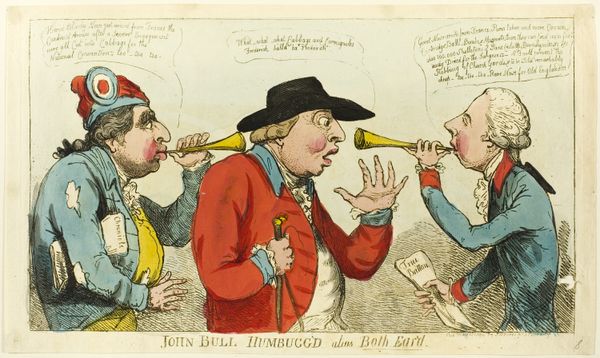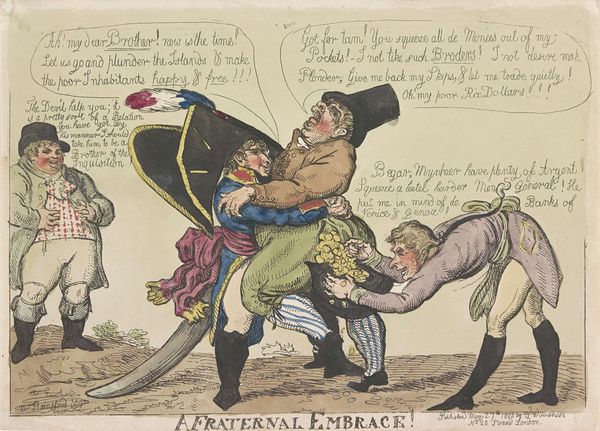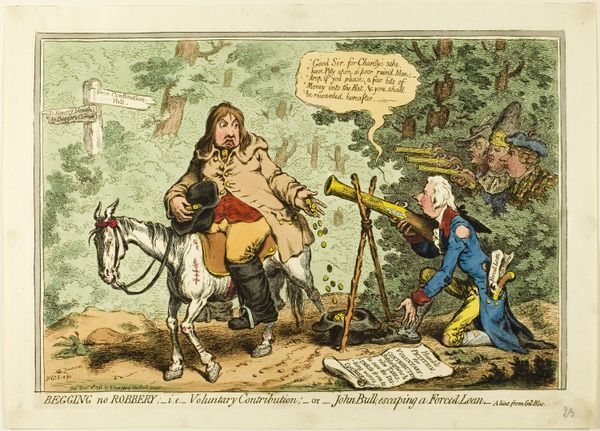
drawing, print, paper, watercolor, ink
#
drawing
# print
#
caricature
#
caricature
#
paper
#
watercolor
#
ink
#
genre-painting
#
history-painting
Copyright: National Gallery of Art: CC0 1.0
Curator: Let's have a look at "Slugs in a Sawpit," a work rendered in ink and watercolor on paper by Thomas Rowlandson, dating back to 1791. What's grabbing you right away about it? Editor: Well, immediately it feels like some kind of elaborate, silly duel! All those grimacing faces and exaggerated poses… like a theatre of the absurd unfolding right here on paper. What's actually going on? Curator: Ah, a duel it is! Although less about honor and more about...political caricature. You see these gentlemen are primed to "fire" scrolls at each other, stand-ins for verbal assaults within political discourse. The "slugs," I reckon, are supposed to represent nasty little insults! Editor: That makes sense. Those scrolls DO look pretty hefty and unpleasant. There’s something delightfully awkward about the whole set-up, isn't there? The way they're both crouched, glaring, all puffed up with their own self-importance… the ridiculous weaponry... and what's that other character doing in the back? Is he trying to escape? Curator: It's chaos, contained within this carefully constructed little scene. The swords strewn around are indicative of a disregard for more traditional or respectable means of conflict. And the fleeing man likely just wants out of it all! Rowlandson uses established caricature traditions, grotesque yet precise exaggeration, to ridicule his subjects and also... the scene of the so-called honorable dual that the nobles love to perform. The work can be read as critique of the elitist conduct in the Age of Revolutions, that had devastating consequences in Europe, especially for those lower in social hierarchies. Editor: So much for measured debate, then. I like the composition – how all the figures are shoved up close to the picture plane, making it feel quite claustrophobic. Heightens the sense of being trapped in this ludicrous squabble. And all that detail in the rendering of their clothes—you can practically feel the weight of their ridiculous wigs! Curator: Precisely! The artist doesn't shy away from documenting even the minute details of clothing. Consider the symbolism of clothing for political satire – often, it is deployed to showcase a figure's position within the aristocratic hierarchy. Each brushstroke seems imbued with contempt for the frivolous drama playing out before us. It's a real condemnation. Editor: It's kind of delicious, isn't it? Okay, I take back the word 'silly'. It is serious… disguised as silliness. Makes the criticism hit harder, somehow. Curator: Indeed, the layers upon layers. And with that, a full, pointed message resonates even now, across time and cultures, I’d say. Editor: Absolutely. Rowlandson may be gone, but petty political spats, sadly, are not!
Comments
No comments
Be the first to comment and join the conversation on the ultimate creative platform.


